2019 Jeep Compass Review

If there’s a better way to get the feel for and discover the idiosyncrasies of a particular vehicle than plopping down in the left-front seat and going for a long-haul drive, I’m not aware of it.
A pavement-pounding 1,100-mile road trip can provide you with a wealth of knowledge about the steed you’re piloting, that plus a sore backside and an unhealthy craving for gas-station coffee. Just such a journey has given me a few strong opinions of Jeep’s Compass, the off-road brand’s fine-looking small crossover.
Why take this trail-ready utility on such a lengthy trip? Well, every year in late spring the Midwest Automotive Media Association (MAMA) hosts a blockbuster drive event at Road America. Nestled amongst the gently rolling hills and bucolic pasturelands of Eastern Wisconsin, this high-speed four-mile track is unquestionably one of the premiere racing circuits in the United States. Too bad it’s nowhere near my home in Southeastern Michigan, hence the trek across America’s heartland.
Jeep’s “Baby Grand”
Size-wise, the Compass is something of a ‘tweener. In certain measurements it’s slightly smaller than a Honda CR-V, Toyota RAV4 or Chevrolet Equinox, but it’s also a touch larger than rival companies’ subcompact utility offerings, products like the HR-V, C-HR and Trax.
FAST FACTS
| Engine: | 2.4-liter four-cylinder |
| Output: | 180 horsepower, 175 pound-feet of torque |
| Transmission: | Nine-speed automatic |
| U.S. Fuel Economy (MPG): | 22 city, 30 highway, 25 combined |
| CAN Fuel Economy (L/100 km): | 10.8 city, 7.8 highway, 9.5 combined |
| U.S. As-Tested Price: | $37,360 including $1,495 for delivery |
| CAN Estimated Price: | $49,208 |
Fortunately, this splitting-the-difference marketplace positioning does nothing to detract from the Compass’ overall appearance. Exterior styling is one of its most-appealing aspects. Unlike the robotic-looking Honda HR-V, that oddly proportioned Chevrolet Trax or Toyota’s weird-looking C-HR, this is an incredibly handsome little hauler that’s the spittin’ image of its larger corporate sibling, the ever-comely Jeep Grand Cherokee. From its iconic seven-slot grille that slightly curves in plan-view along its nose to those squared-off wheel openings to that perky rear-end, the Compass is a looker from just about every angle.
What About the Interior?
Unfortunately, things aren’t quite as well done inside. This vehicle’s cabin is perfectly decent, with plenty of soft plastics in all the places you’d expect them, it’s just many of the materials look pretty workaday, though, admittedly, they’re not really any worse than what you get in competing models.
SEE ALSO: 2020 Jeep Gladiator Review – VIDEO
A few elements do detract from overall cabin ambiance. The steering column-mounted control stalks are remarkably frail, feeling like they might snap off in you hand if, for instance, you engage the windshield wipers with too much enthusiasm. Also, the plastic shroud that houses the start button is embarrassingly low rent. The Compass also has an acute lack of storage space in the center console, an issue that quickly became apparent on my long-haul drive. With refreshments holstered in its duet of cupholders there’s almost no space to put anything like a wallet or phone.
Fortunately, there are laudable elements to this Jeep’s interior. The front bucket seats didn’t immediately seem all that comfortable, but they proved to be tremendous on this road trip, supportive and properly ergonomic, which translates to few aches or pains even after hours of sustained driving.
The Compass provides decent backseat room, too, enough for even those that are relatively long of leg. An elevated lower cushion provides a theater-style seating position and better outward visibility for passengers in coach.
As usual, FCA’s Uconnect infotainment system is snappy to use and simple to decipher. A 7-inch touchscreen is standard, but the up-level Compass tested here was fitted with the more generous 8.4-incher. Apple CarPlay and Android Auto are baked right in for added user-friendliness.
Versatility and Mechanicals
The Jeep Compass does an admirable job hauling people. It’s also quite adept at handling cargo.
Rear seats up, it provides 27.2 cubic feet (771 liters) of space. Fold those backrests down and you’re treated to just shy of 60 (1,693 liters). These figures compare nicely with the space-efficient Honda HR-V and Chevrolet Equinox.
Behind that iconic grille, North American drivers are served just one engine in the Compass. It’s a 2.4-liter MultiAir four-cylinder unit that pumps out a respectable 180 horsepower and 175 pound-feet of torque. According to Jeep, this vehicle is offered with up to 17 different powertrain combinations depending on the market it’s sold in. Reflecting this international flair, the Compass in manufactured in Mexico, Brazil, China and even India for sale in markets around the world. The example tested here was screwed together in Toluca, Mexico.
SEE ALSO: 2 019 Jeep Grand Cherokee Trailhawk Review
Fortunately, you can choose between front or all-wheel drive. Jeep Active Drive is optional on all models save the Trailhawk version. This includes a Selec-Terrain system that allows you to tailor the vehicle’s behavior to different surface conditions, optimizing wheel slip, throttle response and other parameters to deliver the best performance in snow, mud or other adverse conditions.
Compass Trailhawk models com standard with Jeep Active Drive Low, which includes a 20-to-1 crawl ratio, underbody skid plates, red tow hooks both front and rear plus a ride-height increase of nearly an inch. They also brandish hill-descent control and more aggressive off-road tires on 17-inch wheels. As the name implies, Trailhawks are trail-rated and can drive through up to 19 inches of water.
Backing up that single engine is a triad of transmissions. A manual or automatic, both with six forward speeds, can be had in two-wheel-drive models or certain versions with four-wheel drive. A nine-ratio self-shifting gearbox is the top offering.
On the subject of fuel consumption, the High Altitude 4×4 model tested here stickered at 22 miles per gallon (10.8 l/100 km) in the city and 30 (7.8 l/100 km) on highway drives. Combined, it’s rated at 25 mpg (9.5 l/100 km).
When equipped with four-wheel drive, the Compass can tow up to 2,000 pounds. Jeep does not recommend towing with front-drive models.
The Drive
Despite its off-road capabilities, the Compass is quite adept at gobbling up highway miles. The engine is reasonably smooth, unexpectedly efficient and powerful enough, even with three people and a load of luggage onboard.
SEE ALSO: Why the Four-Cylinder Hybrid is the Jeep Wrangler’s Best Powertrain – VIDEO
While not my favorite engine in the world, that MultiAir four-banger gets the job done and returned just shy of 29 miles per gallon after my 1,100-mile round-trip trek to Wisconsin. That’s impressive, especially considering how hard it got driven.
There’s plenty to like about this crossover’s powertrain, however, there is one absolutely loathsome aspect to it: that damn transmission. The ZF-sourced automatic is simply dreadful. Despite having a whopping nine ratios to choose from it’s never in the right one, like, EVER. On the highway, it always feels three gears too high. Passing requires you to bury the accelerator then wait a second or two for it do decide what to do. If a downshift of five is granted, you’ll zip around slower-moving vehicles no problem, then the transmission is back in eighth gear as soon as physically possible. Apparently, ninth is only there for show as I don’t think the vehicle ever actually shifted into it on its own, not even at 80 miles an hour.
Around town, that transmission also makes the Compass feel somewhat lethargic. It’s always upshifting to the highest ratio possible for a given speed. Of course, the result of this prudishness is superb rear-world fuel economy, though it comes at the expense of all driving joy.
Underway, this crossover’s ride is mostly smooth and its interior competitively quiet. Adaptive cruise control also proved to be a godsend while navigating Chicagoland traffic. It’s not the smoothest operator in the business, but it still worked well and saved a mountain of aggravation. This feature should be included in the available $795 Advanced Safety Group options package.
The Verdict
Comfortable, spacious and economical, the Jeep Compass is a competent small crossover. Unfortunately, the overall experience is marred by frustrating performance and a handful of annoying interior elements.
Some of these downsides are much more forgivable at the lower-end of its pricing spectrum. An entry-level Sport model starts around $23,000 and should provide much of the basic goodness found in this range-topping High Altitude model, all for way less cash. But at more than 37 grand, the example tested here is harder to justify.
Discuss this review on our Jeep Compass Forum
LOVE IT
- Comfortable accommodations
- Reasonably spacious interior
- Acceptable performance
- Fuel efficiency
LEAVE IT
- Transmission performance
- Some interior cheapness
- Can get expensive

Born and raised in metro Detroit, Craig was steeped in mechanics from childhood. He feels as much at home with a wrench or welding gun in his hand as he does behind the wheel or in front of a camera. Putting his Bachelor's Degree in Journalism to good use, he's always pumping out videos, reviews, and features for AutoGuide.com. When the workday is over, he can be found out driving his fully restored 1936 Ford V8 sedan. Craig has covered the automotive industry full time for more than 10 years and is a member of the Automotive Press Association (APA) and Midwest Automotive Media Association (MAMA).
More by Craig Cole




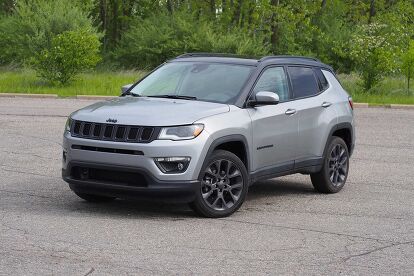



























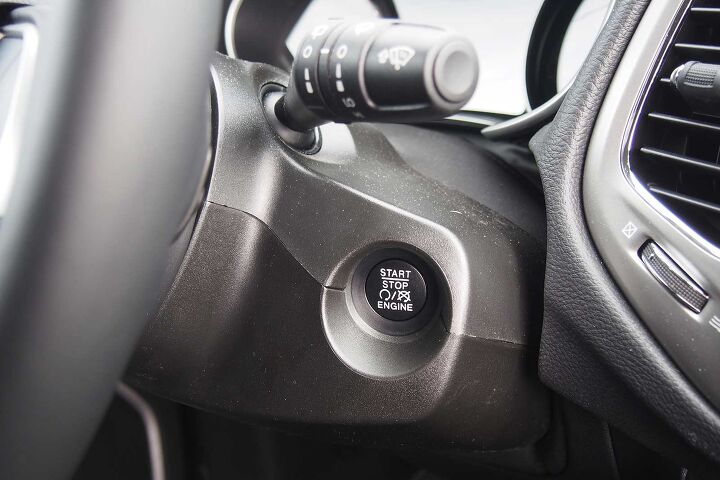






















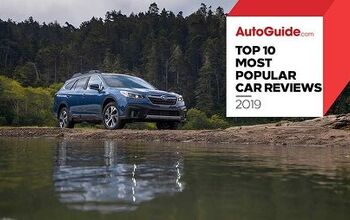


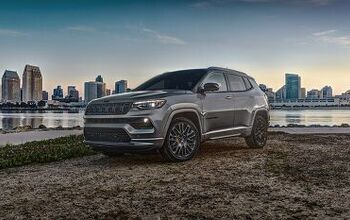



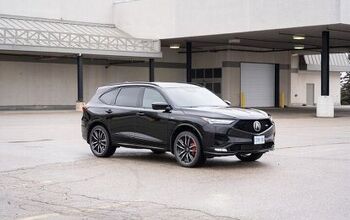
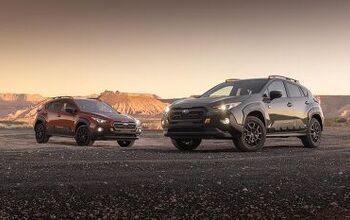




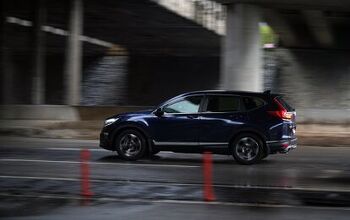
Comments
Join the conversation